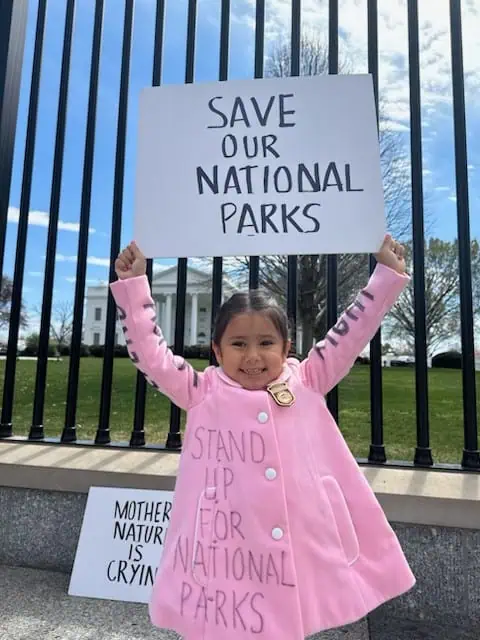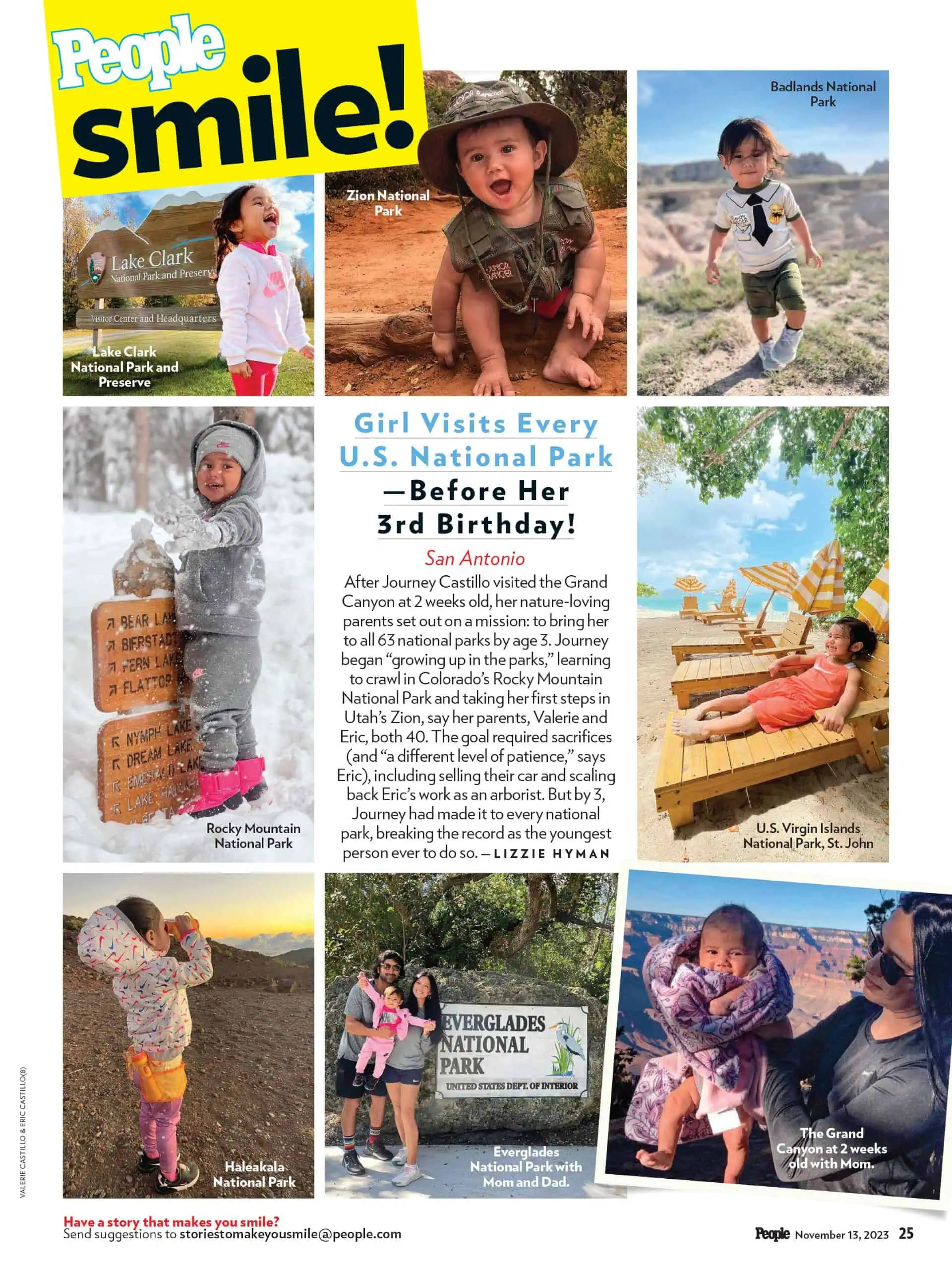The Youngest Ever to Visit all 63 of America’s National Treasures
When our daughter Journey was born, we knew we wanted to raise her with a sense of wonder, respect for nature, and a spirit of adventure. So we made a big decision: we would visit every national park in the U.S. together as a family. This is the story of that journey, of watching our little girl grow . . . one park at a time.
The Beginning of Our Journey
Before we ever set foot in a national park as a family, we faced a moment that tested everything we hoped for. We both had our journeys prior to finding each other and had already accomplished the goal of starting—and quickly growing—a tree care business.
After four years, we found out we were pregnant, but had a scare at 11 weeks when Valerie had to go to the emergency room because there was bleeding. It was a Friday, and there was nothing they could do, so they sent us home and said, “See your OB on Monday and pray for a heartbeat.” That weekend we both cried and prayed for this little miracle. When we went to the doctor on Monday, they did the sonogram and she had a loud, strong heartbeat of 142. That was when we knew this little girl was a fighter—and already a survivor—so we decided her name would be Journey.
A month later, Covid hit and things got scary and stressful. We realized that life is short, and nothing is guaranteed, so when she was born, as soon as we were released two days after her birth, we asked our pediatrician if it was okay to take her to Pikes Peak in Colorado. The doctor said absolutely; that is the safest place for a newborn.
We wanted to get her away from being quarantined at home and hit the places that rejuvenated our spirits. We had just watched a documentary about Native Americans traveling with their newborns to majestic mountains to let them open their eyes and breathe in the energy. So, when Journey was one week old, we drove to Pikes Peak, then headed to Sedona to take her for a blessing at the vortexes, and from there took her to the Grand Canyon.
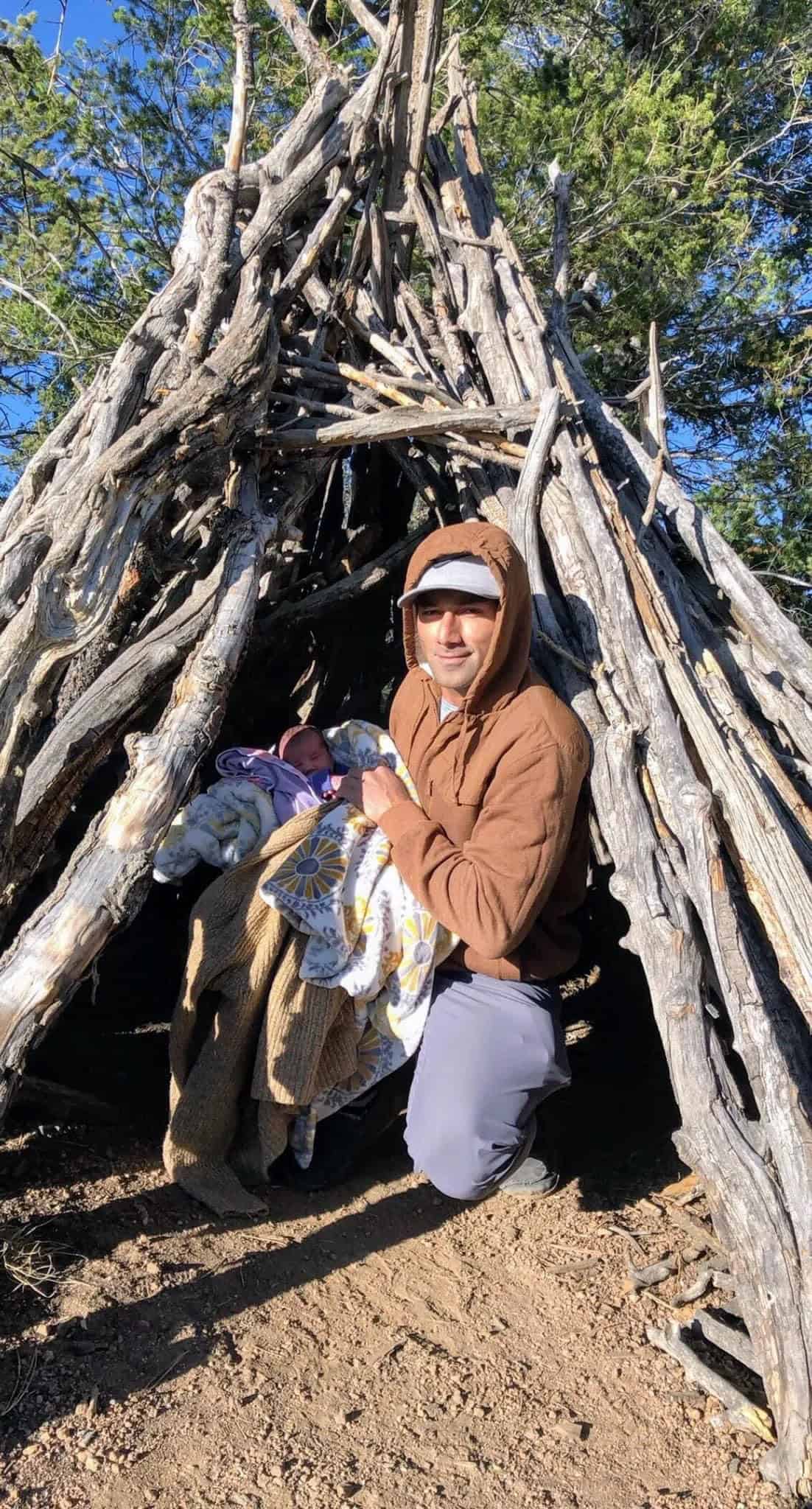
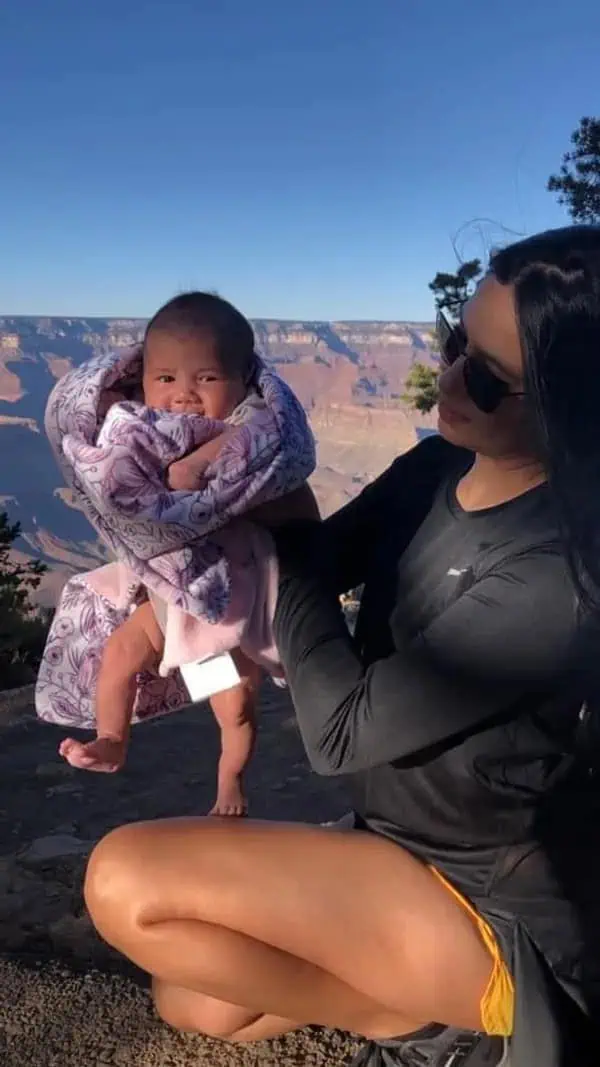
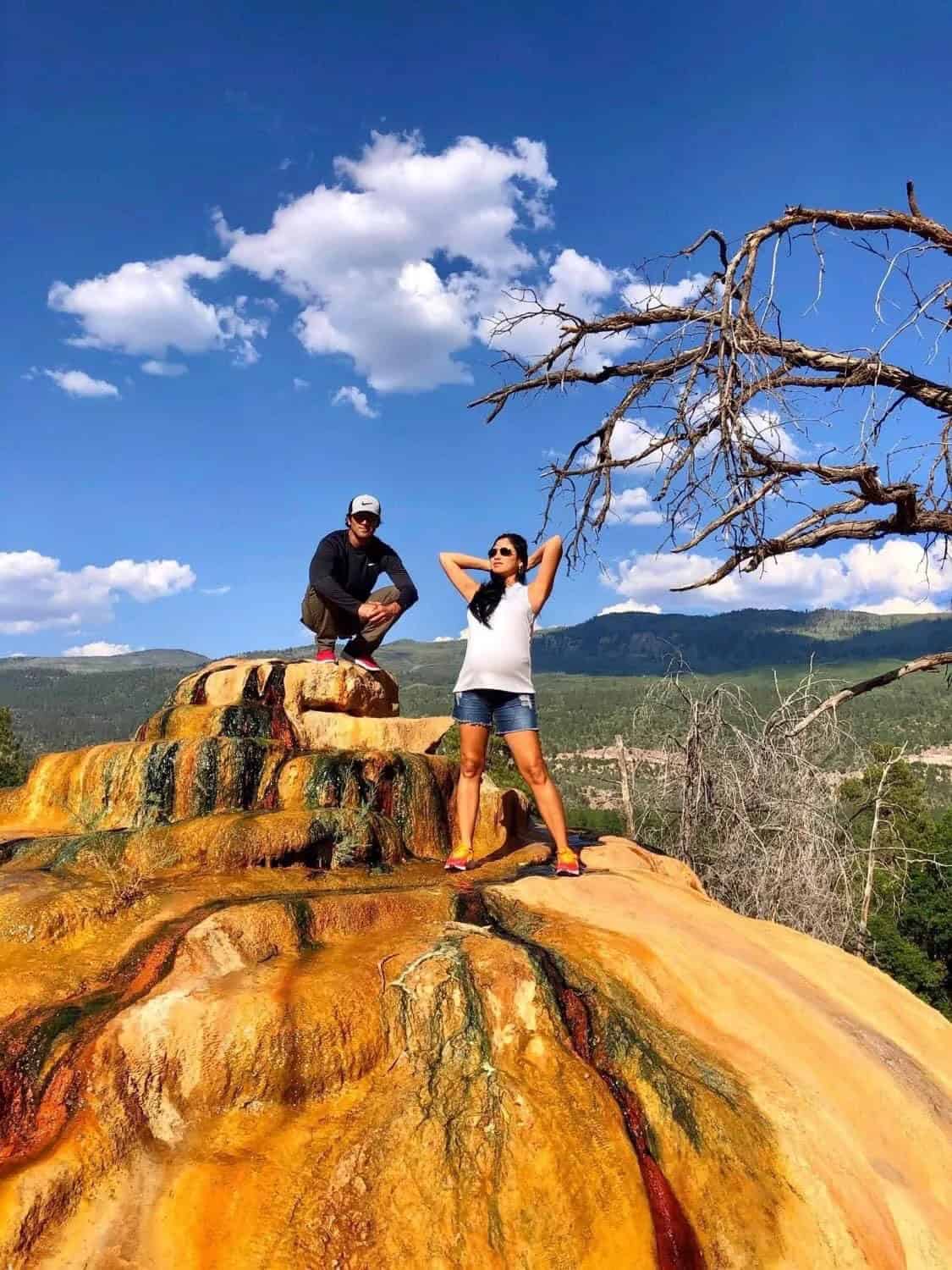
Discovering the National Parks
That is when we saw the brown and white National Park Service sign and realized this was a “National” park, and then we understood what the NPS was. Growing up in Texas, we were raised on two main standards: What church do you go to, and what sport did you play? National Parks were not highly publicized and not something we discovered until we were both 38.
So we did our research and started visiting the ones we were curious about, like Zion, Yosemite, Sequoia, and Yellowstone. Around park 17, we joked that we should do 21 by one, 42 by two years, and 63 by three years, with no idea how life changing and challenging it would be.
Pro Tip: If you plan to see all 63 US national parks, map out clusters. After you visit one park, look for every park in that region and knock them out together. We learned the hard way that chasing famous parks first meant skipping nearby gems, so later we had to fly back to areas we had already visited.
By this time, Covid was causing panic and travel had shut down. Valerie had been on maternity leave, and we were both running our tree service company. Eric is a talented arborist and Valerie is a software tech marketing expert. But we knew this was a once-in-a-lifetime opportunity, so we diverted our priorities to take advantage of what most people were afraid to do.
Car rentals were only $5 a day, and we could fly anywhere for a couple hundred bucks. Hotels were cheap too, and getting a 4- or 5-star room was $50 to $100 a night. Not using that to our advantage would have been tragic. Eric had been a coach of young athletes, and Valerie had been in the corporate world as a director for over a decade, so we wanted to do something unusual with Journey.
We saw visiting national parks and hiking as a sport. We wanted to instill in Journey a love of nature, an adaptability to challenges of the outdoors, and strong resilience. We wanted her to have a future where she could possibly become a park ranger or do something for the Earth.
Eric grew up in sports and saw it as a great thing, but he knew it should not be the only thing, because eventually, when that identity is over, many kids get lost. He saw the national parks as a better solution.
Being born a female in a generation that we knew nothing about—with social media, technology, YouTube, and so on—Journey could face challenges we would not be able to help her with. We wanted to give her an identity other than the norm. Her arrival during Covid felt like both a gift and a promise—an investment in her future, so that she could have a voice for her generation.
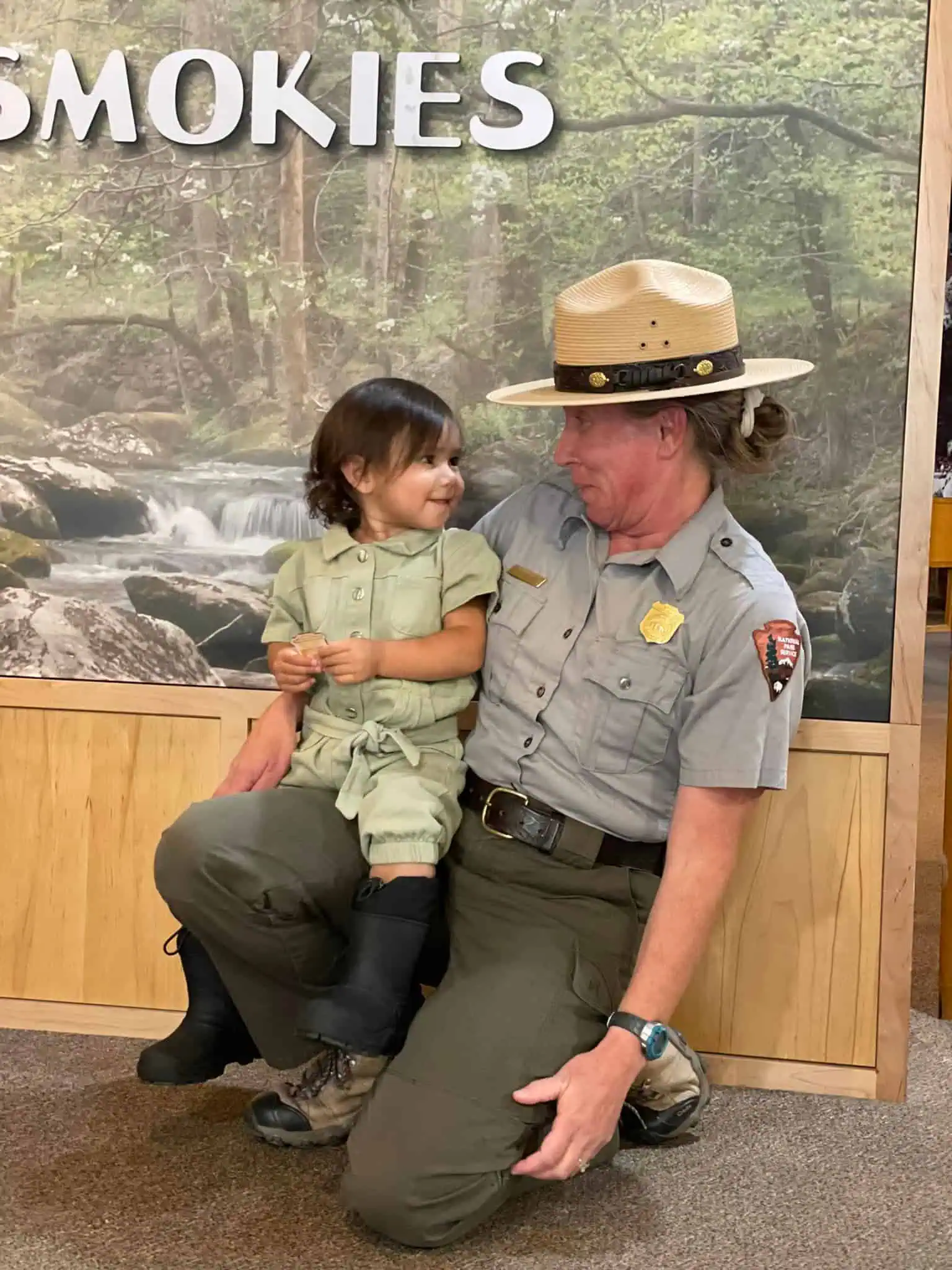
First Steps
Taking hikes in these parks was eye opening as well. There were so many people from older generations who totally inspired us. But it was also sad. We saw them hiking alone, and while they were strong and healthy, they did not have their family to enjoy it with. We knew this was a time in our life we could not get back, and it was incredible to share these memories together. We could see before our eyes that our little science experiment was working.
Journey was literally raised in national parks. We saw her take her first steps at Zion in a meadow with the red rocks as the backdrop. She was exposed to energy at such a young age with her bare feet and hands. The air in her lungs was connecting her to the parks. At Olympic National Park things really started to shift for us. After a 4-hour flight, we pulled up to Hoh Rain Forest and sat in the car for an hour because it was raining, and where we come from in San Antonio, Texas, you do not take your baby out in the rain. In our culture, you do not even take your baby out of the house until 2 months old. So we finally realized the weather was not going to accommodate us. We had a toddler bursting with energy who had been held on a flight, and we were waiting for the rain to stop in a rain forest. We got out, let her jump through puddles, sink her hands in the mud, and laughed hysterically about how naïve we were. This was rejuvenation.
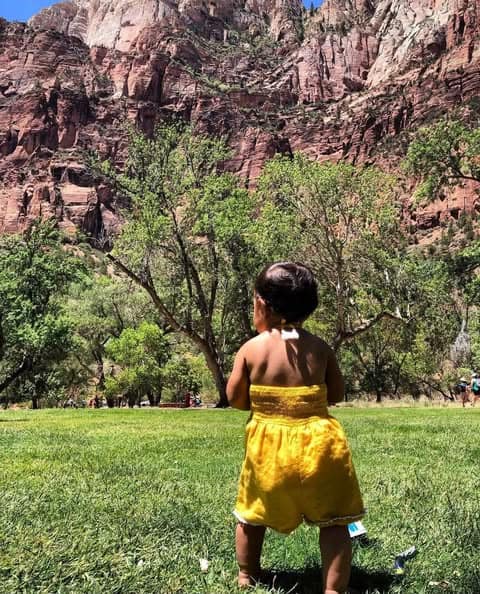
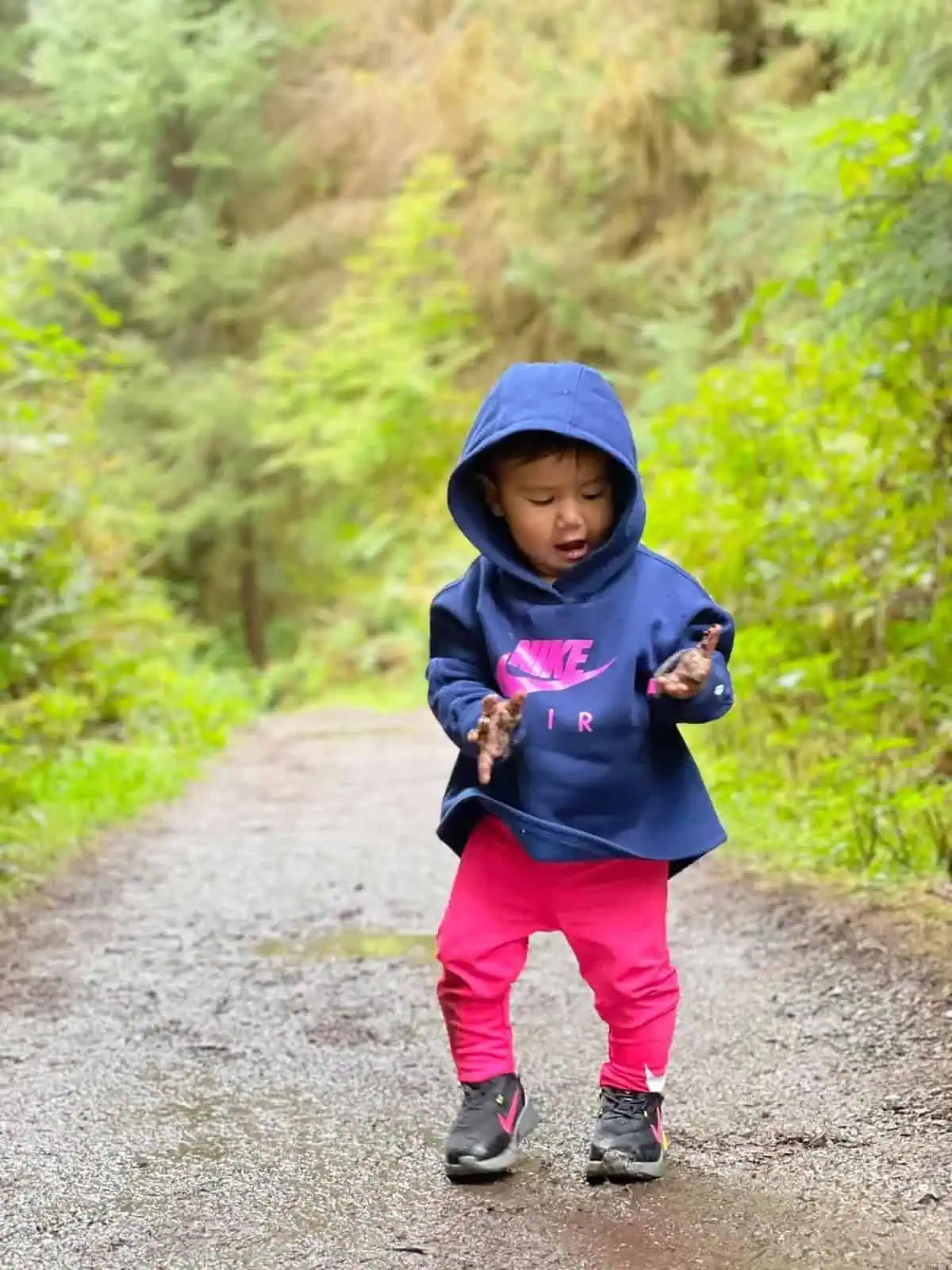
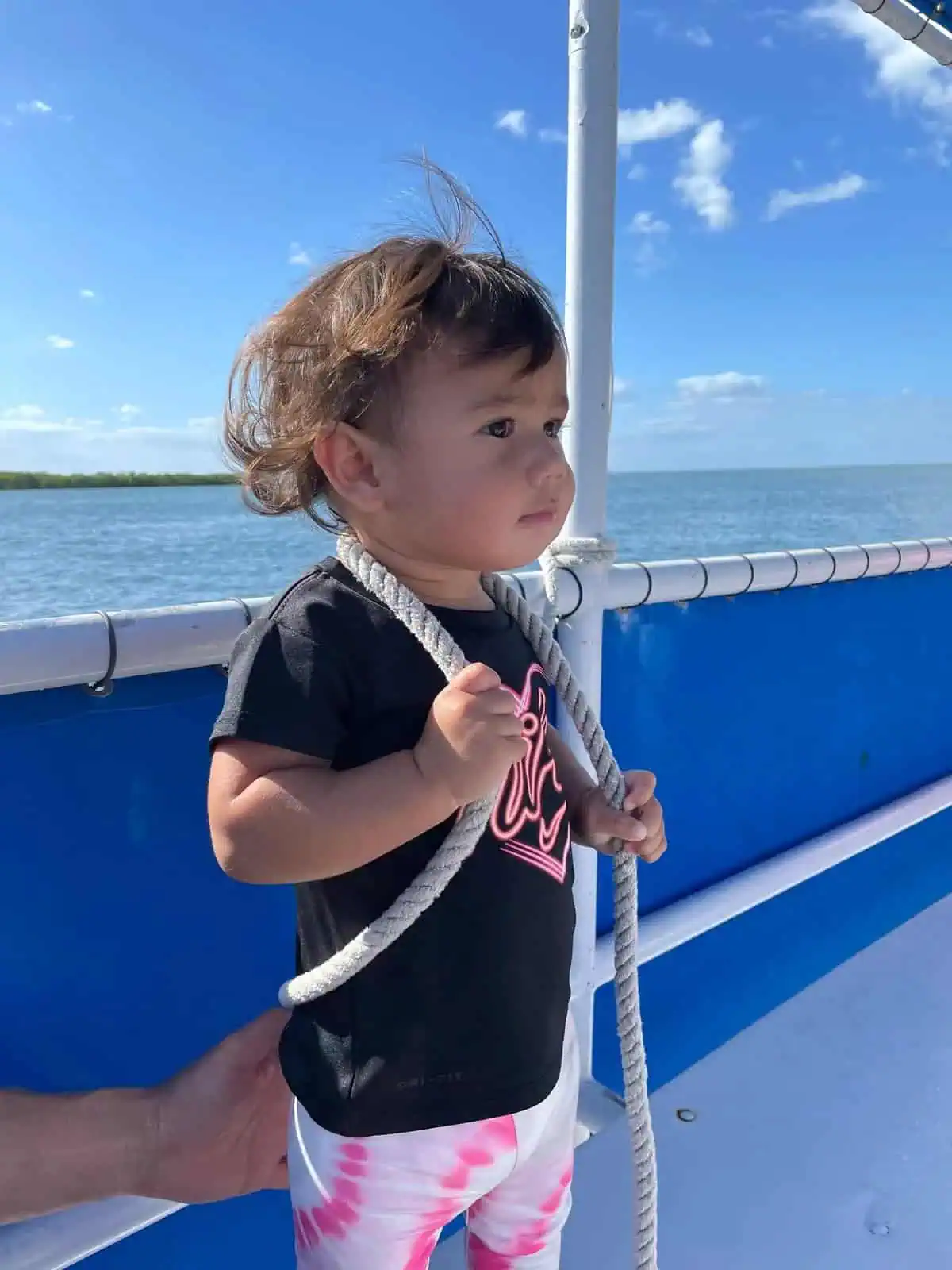
The parks are not amusement parks by any means, and when you accomplish the challenges of logistics, acclimating to weather conditions, finding food, lodging, and so on, you feel like you can take on anything. It gives you strength. It also humbles you; your problems are nothing when you are in these parks. You see how nature heals itself, and you have that same strength to overcome whatever life is throwing at you.
At Biscayne we had to take a boat ride to get to the island. Ninety percent of this park outside Miami is water. We met a mother and her two daughters; they were preteens, playing with Journey and giggling. The boat ride was a couple of hours, so the captain had us each introduce ourselves and share our story of why we were visiting. Their mother told how her house burned down and they lost every single belonging. While that could have been a tragedy, she saw it as an opportunity for what she called “roadication.” She took her insurance money and her girls and decided to give them an education on the road visiting national parks. She said it was the best thing that ever happened to them, and Eric and I just looked at each other and laughed. We felt the exact same way.
Journey Go Explore
Around the time we set the goal, we had been sharing our photos with family and friends. Our local TV station ran a story about Kids Who Make SA Great and wanted to feature Journey as an inspiration for kids to get outside and enjoy the outdoors. At that time, kids had been feeling the effects of living in a new world, not going to school in person, spending so much time on devices, and parents needed advice on how to handle all the changes. No gyms, no movie theaters—this was causing mental health concerns. We could see it affecting so many kids, and we knew if they just got outside like we were doing, or like how we did growing up, they would benefit in many ways, not just physically but mentally.
We began advocating for getting outdoors and launched Journey Go Explore as a mission to inspire everyone. Our slogan is “Whether You are 1 or 91, It is Never Too Late to Start Your Journey.” We had people of all ages reaching out, saying that if Journey could run a mile at 1, they had no excuses and that she was inspiring them to take their kids to see national parks.
Her story was taking off. She had no fear and a lot of confidence from being around so many people in airports. Talking to journalists was just fun. She was also beginning to understand the Junior Ranger program and what the responsibilities were. It was a perfect way to get her engaged. We went from hiking 10 miles with her in a harness to walking half a mile at a 1-year-old’s pace. In each park, we could see her get stronger, tougher, and more savvy.
As the attention grew, the pressure grew. We had to pick up the pace if we were going to do what we said. We would spend two weeks traveling and two weeks working at home to replenish funds. We did not have help, sponsors, or donations, and as Covid restrictions eased people began traveling. We could see the parks getting more and more crowded. It is a different experience when you are only three people in thousands of acres, and we could see how the ranger count was low for the number of visitors. While we loved seeing people who appreciated the parks like we did, we also saw trash left on trails. That was sad. Even bigger were the climate effects.
A Changing Climate
The first real gut punch was visiting Yosemite again when Journey was able to walk. The first time we were there she was 6 months old, and we carried her to the greatest waterfall we had ever seen. It was so majestic that the wind from the water blew you back, and it was so loud you could not hear yourself speak. It was the moment we fell in love with national parks. Seeing her joy as a baby with the wind in her face, we decided to return when she was one.
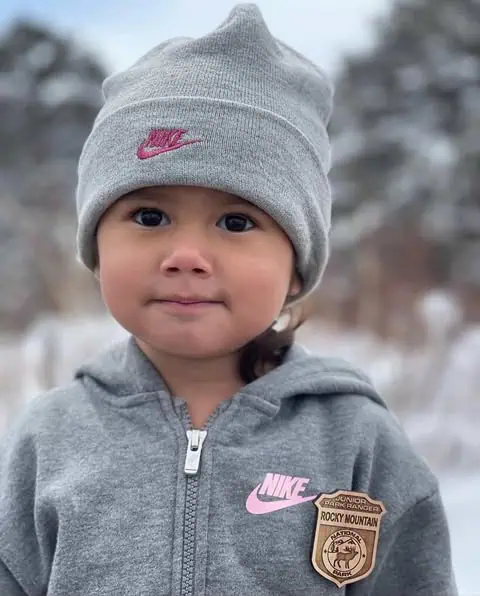
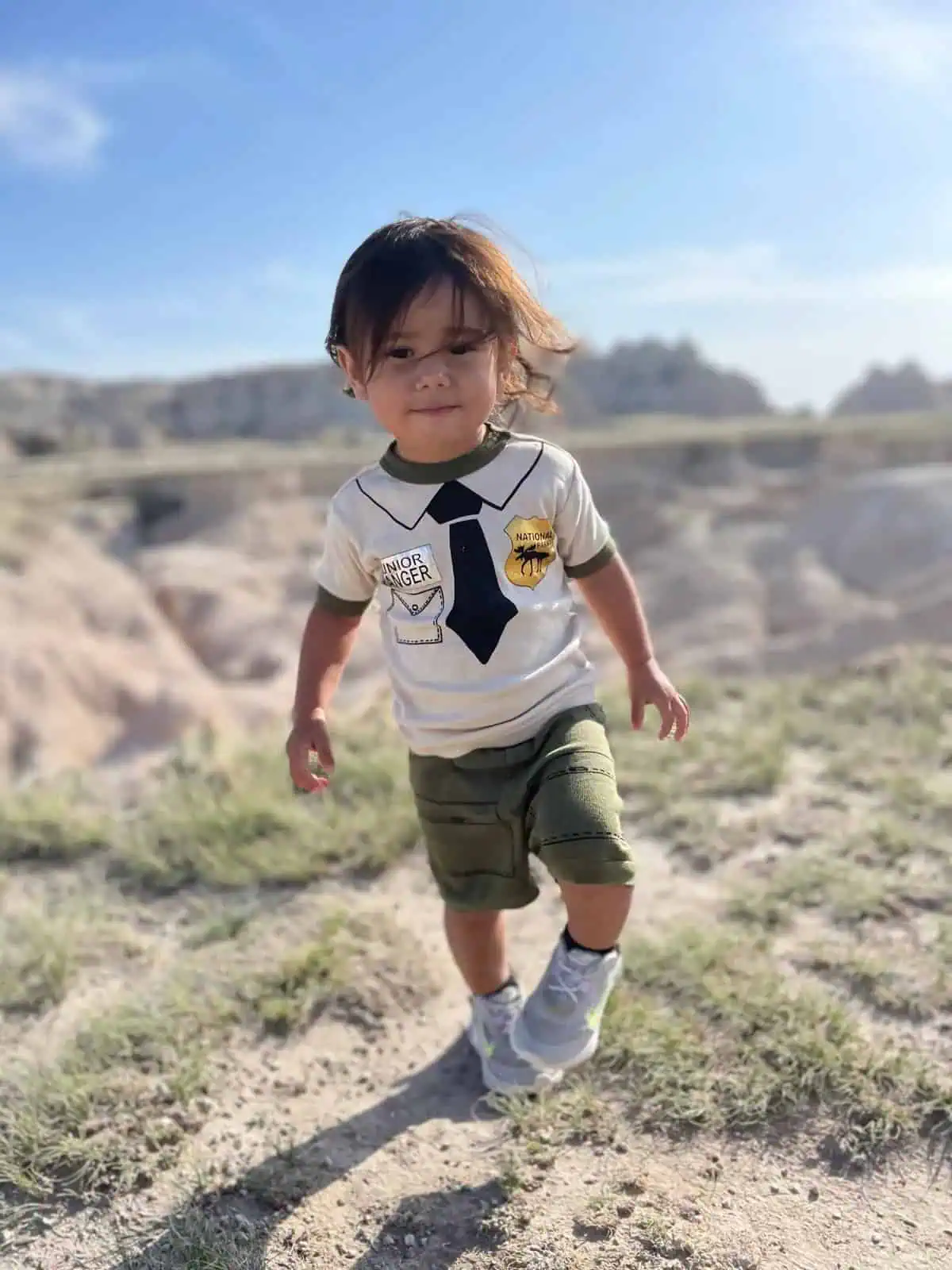
This same waterfall had been reduced to a slow trickle, and was crowded with people climbing over the boulders to stand in the once powerful base. Many were off the trails, and grief hit us at the reality that Journey would never see that waterfall the way we did.
Warmer temperatures are not slowing. Climate change is considered political by some, but witnessing it changed our sense of urgency and purpose. Sadly, climate and weather became a part of the challenges in reaching all 63 parks by the time Journey was 3. Mother Nature does not accommodate. We saw wildfires in Kings Canyon and Joshua Tree. At Glacier we slept in a tent and could smell smoke in the air. As we headed to the airport, flights were canceled and everyone else was evacuated.
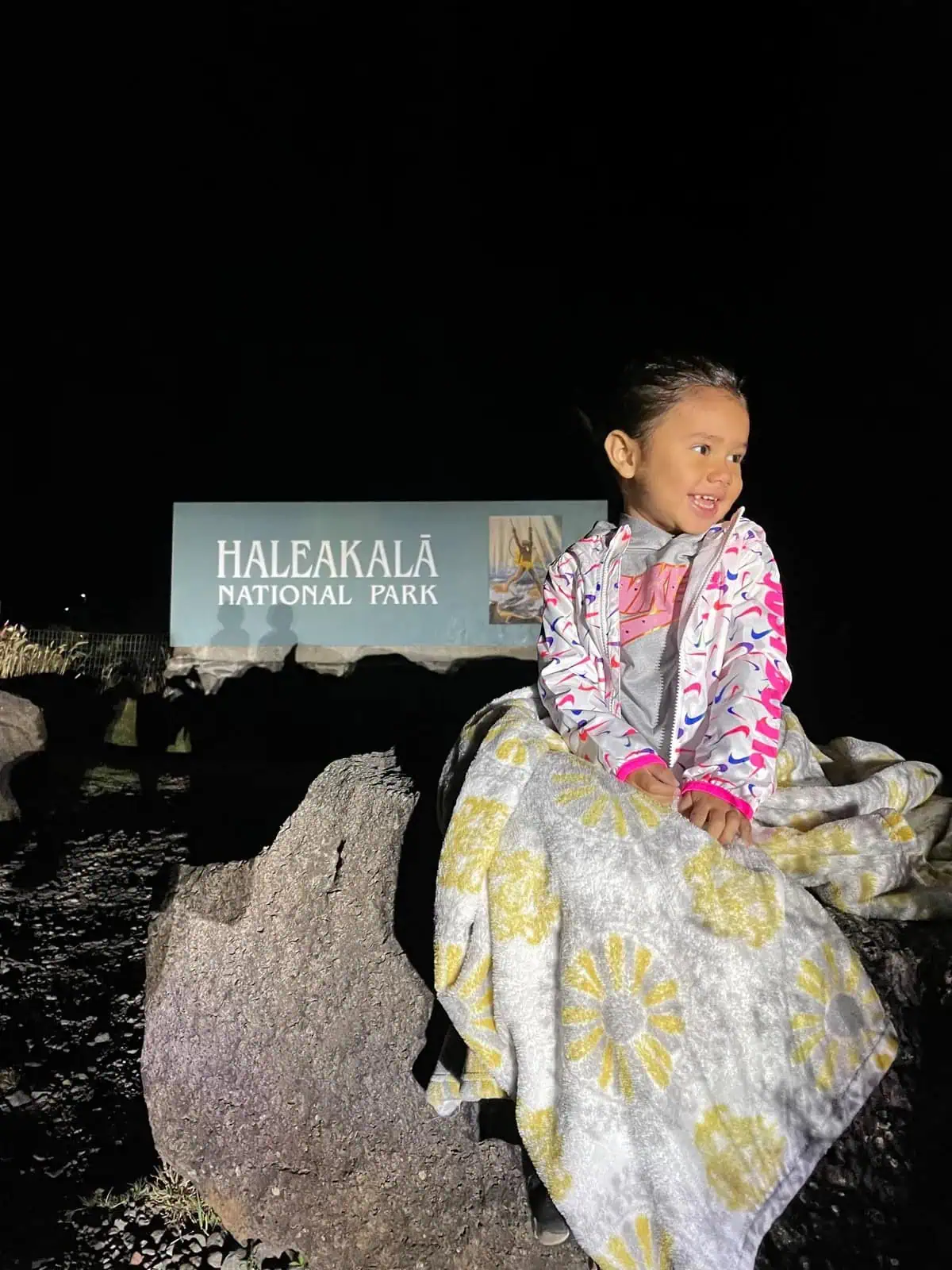
We witnessed tragedy while planning Hawaiʻi Volcanoes, Haleakalā, and American Samoa. We had spent $10,000 on flights and logistics, and then Maui suffered the deadliest wildfire in its history. We thought that was the end of our goal because people said, “Do not go to Maui out of respect.” But thank God we went anyway—as advocates.
We landed at the same time as President Biden. We immersed ourselves in the culture and talked to many locals who told us their livelihoods were impacted because they relied so heavily on tourism. We waited for days, watching the NPS site for Haleakalā to reopen, refreshing our screens at 1 am, and finally won the lottery to enter the next morning. It was breathtaking, and everything it took to get there made it that much more gratifying.
Going to Samoa felt like stepping into a capsule that transported us into a different world for two people and a toddler from San Antonio, Texas. When we arrived at the small airport, we felt the shock of being outsiders. Natives arriving on our flight were greeted by dozens of family members so excited to see their loved ones come home. The family unit was tighter than anything we had ever witnessed.
We could see that cousins, aunts, uncles, and grandparents had all made the effort to greet them even though the arrival was after midnight and there were only two flights a week. Many even had T-shirts with family names, like team jerseys. Driving in, we noticed graves in front yards and learned that they bury family members in their yards or under their homes to keep them close. This deep love and respect is something we rarely see in our own culture. Kids played outside in bunches, and again we felt awe.
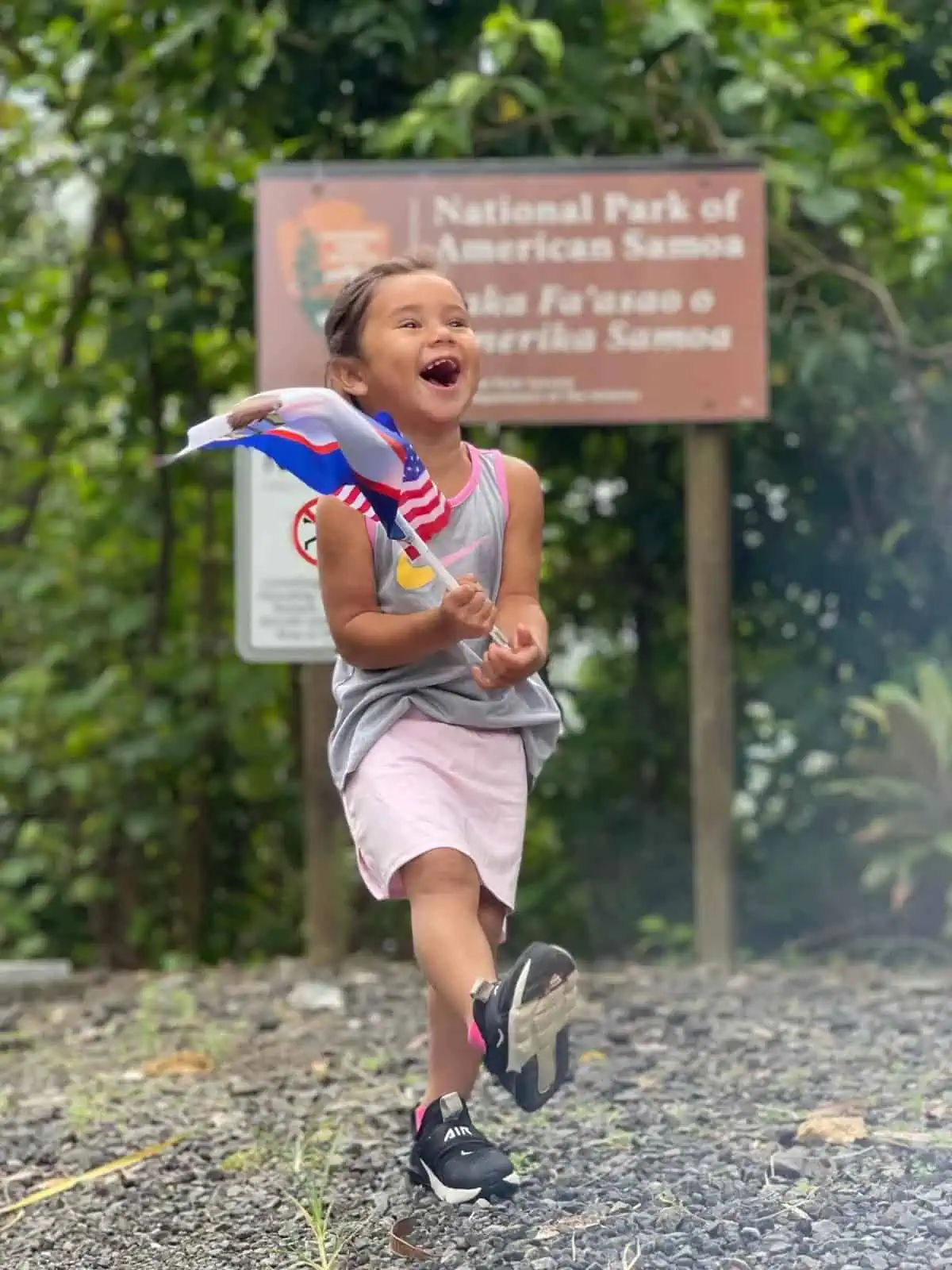
The Grand Finale
Then came Alaska, the grand finale, also known as the Undertaker. Getting to all eight parks in 11 days could have been the death of us. Everything was tested. Did we have what it took?
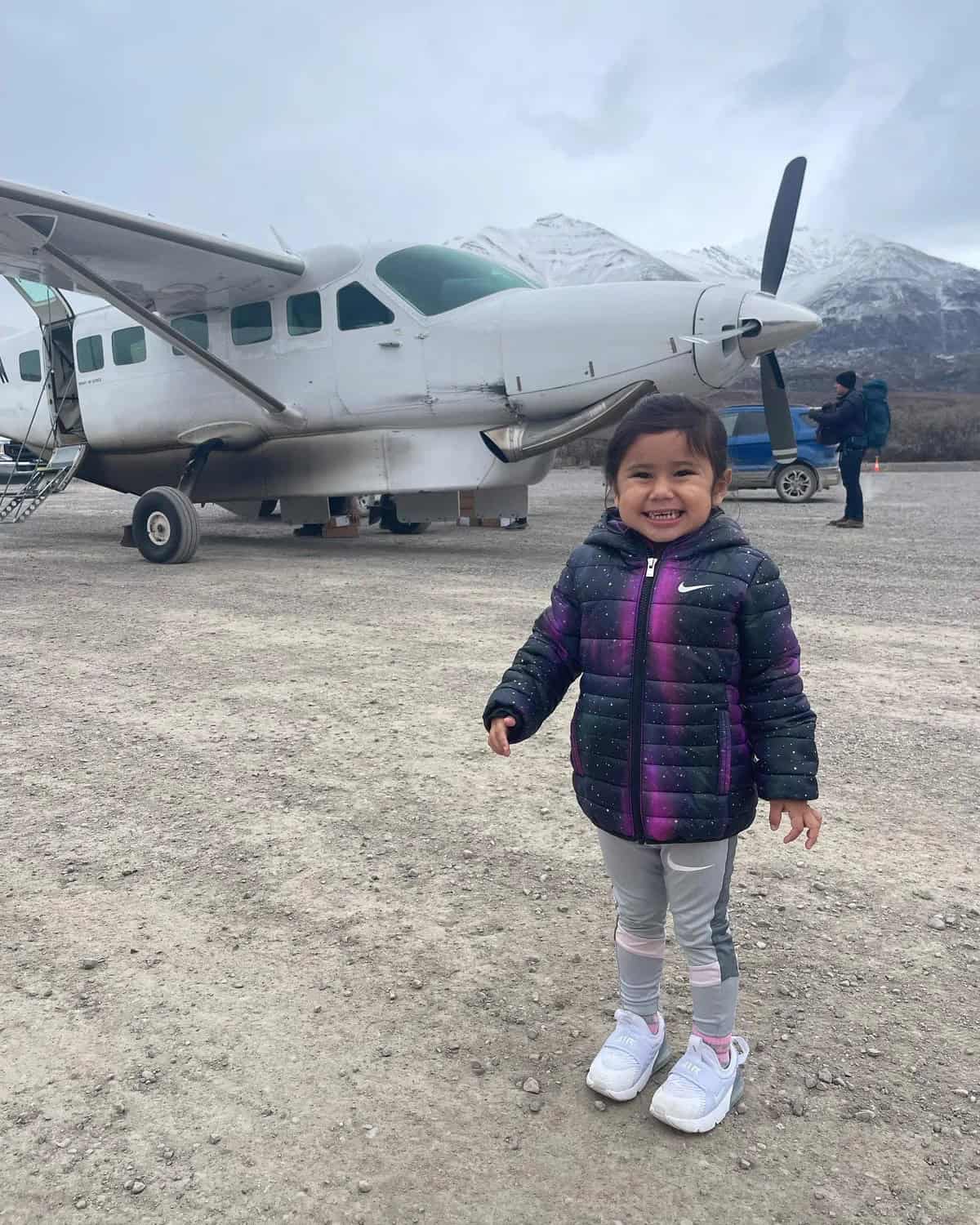
First off, do not go to Alaska at the beginning of winter because reaching parks can be life or death and transportation shuts down. Most places are accessible only with guides. Every test felt like a Mario Brothers game; every time you think you are near one level, you shrink right back down. We should have done Alaska before Hawaiʻi because of weather, but no one told us, and we figured, “Save the hardest for last.” That was an understatement.
So many decisions affected timing. We started by driving to Denali, then driving to Fairbanks to get a charter to Gates of the Arctic. The charter was not a tourist flight; it was a cargo flight with boxes of goods and no heat. Freezing, we landed in a village where there was no Uber or taxi, so we walked to the NPS office. Like striking gold, we met the ranger who was packing boxes to leave the next day for winter. He had stories to tell!
From there, we caught a flight from hell—a single engine plane that kept blowing sideways in gusts of wind as it took us to Kobuk Valley.
Then we drove back to Anchorage and flew to Juneau to take a ferry to Glacier Bay, only to find out when the boat had docked that it was a 9-mile walk to the park. There was no way we would be able to walk to the park and make it back to the ferry on time for departure. That was gut punching.
This felt like the end and a total loss. We asked a woman for a ride; yes, hitchhiking. She said no, she had Covid. We were walking around with a stroller and toddler, totally defeated, when a lady drove up and asked if we needed help. This was literally an angel. We told her about our national park goal, and she was a godsend. She drove us to the park, took pictures with us, and by that time we missed the ferry back to Juneau. She drove us to the tiny airport, and we booked a flight to Juneau leaving in 10 minutes. What a roller coaster.
We had booked a charter to Katmai and Lake Clark, and we got the call that weather turned and the charter was canceled. That was it for the year. We got on the phone and called every pilot in Alaska and cried when they all told us no; it was too dangerous. Again, we were losing hope but not giving up.
As we drove from Juneau toward Wrangell St. Elias, the road was closed due to bad weather. Sitting for hours in a car with a toddler was not fun so we got out of the car and chatted with a road worker/godsend who said she knew the owner of an airport that serviced Lake Clark—his family were the Clarks the park was named for. She told us to look him up and email him using her name as a reference. He had no phone number.
That night we wrote the most desperate yet heartfelt email begging him to take us. NPS was officially closed, and parks were understaffed because the government was shutting down. Another hurdle. Mr. Clark emailed back and said he would fly us, but the cost to reach both parks was almost $4,000 since it was a private tour, and he would call NPS to get special permission. We booked it.
His son took us from Anchorage to Lake Clark in the smallest plane we had ever boarded. From there, he flew us to Katmai and fed us the best lunch of our lives. We prayed with our eyes closed the entire time flying on his plane. Eric had to pee in a water bottle because it was so scary. We made the mistake of saying yes to seeing the volcano over Katmai, which added 30 minutes at higher altitude and more terror.
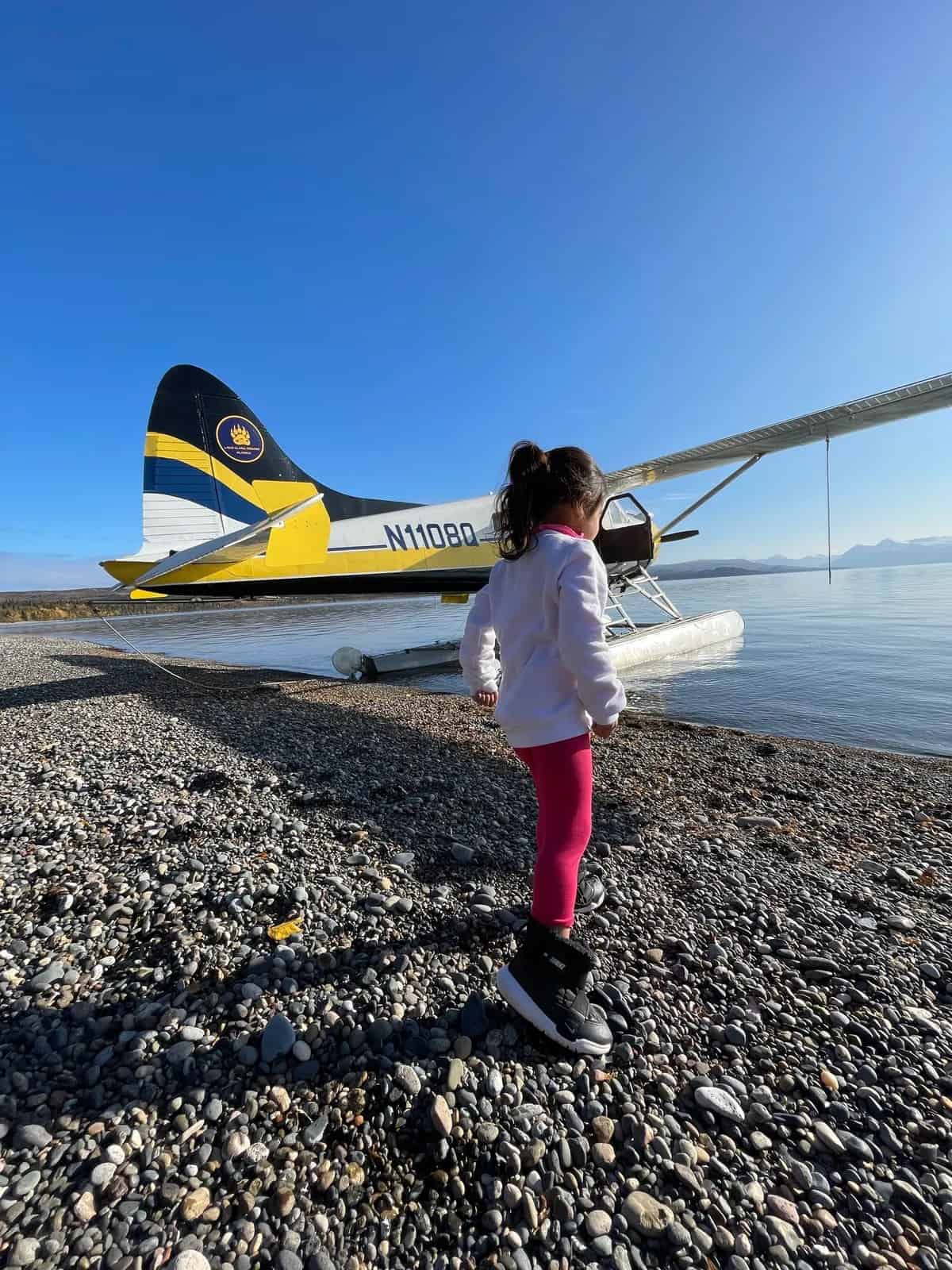
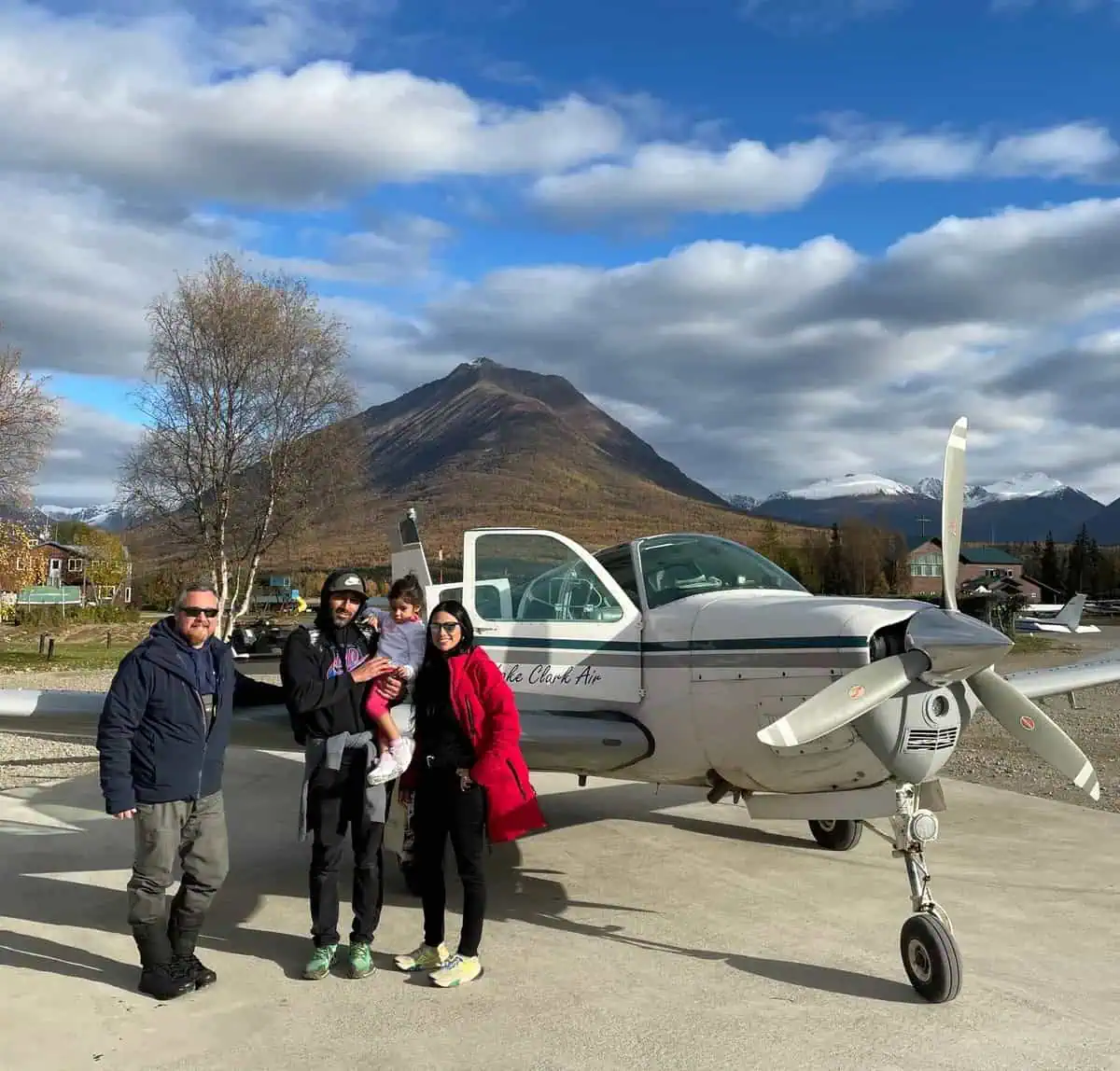
Back on the ground we were in tears. Reaching park 63 at Lake Clark felt like winning an Olympic gold medal. This was what we had spent the last three years of our lives dedicated to.
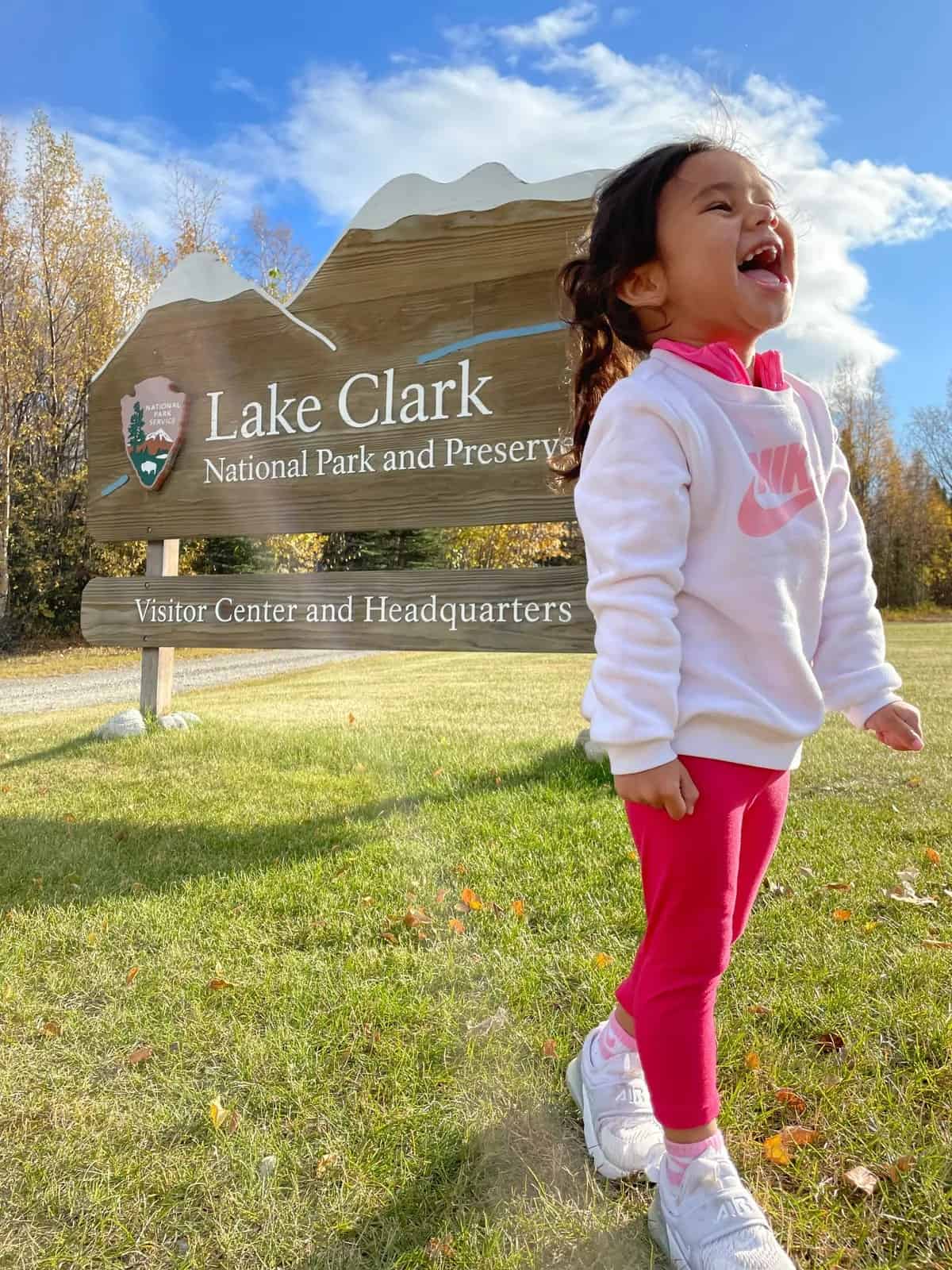
We get asked often, “What are your favorite parks?” That is like asking which chapter of a book you should read if you skip the rest. It is not easy to answer. We have experienced so many unbelievable memories in each park, private moments personal to us that might not matter to others. These special times are priceless and worth every sacrifice. The resilience gained from setting foot on such iconic lands, each with its own spirit and energy, is like a liquid you never quench.
Visiting all 63 is not for everyone; they are not amusement parks, and many are hard to access physically and financially. For the small group who achieve all 63, only they can vouch for the gratification. Journey being recognized as the youngest person to visit all 63 US national parks by age 3 was never on our minds while traveling. We just knew this was a gift to her, and what she does with it could change the world. This is not about us; it is about Journey and her voice.
Some incredible, full circle moments came the week after she hit the goal. National news outlets like Fox, Smithsonian, Good Morning America, People, and even SNL joked about her. The story being shared that way was sweet, but it is not the end.
The Future
We encourage parents to make visiting a national park fun but also educational. Ask your kids a few questions:
- Why is the park a designated national park?
- What is the story behind its becoming a park?
- Who fought for it to be protected?
- What cultures are preserved there?
- What history happened there?
- What are the park’s challenges today?
- What does the park contribute to the ecosystem?
Asking these questions makes the visit a deeper experience and helps kids think about what actions they can take. Will it inspire more future park rangers, biologists, scientists, animal researchers or activists? Nothing will be solved in our generation, but there is hope in theirs. They are the hope for the future, and what we can do is give them the tools to fight battles we will not be around for.
We are not joking when we say Journey will be President in 2055. Like Michael Jordan, Tiger Woods, or Serena Williams, greatness starts young. This spring in Washington DC, Journey proudly protested in front of the White House and became the youngest activist for national parks at age 4. We now see the parks threatened from unexpected angles. We thought climate was the biggest threat, and now politics. The fight is real. Journey is ready and equipped. Let us all stand for the parks and fight.
